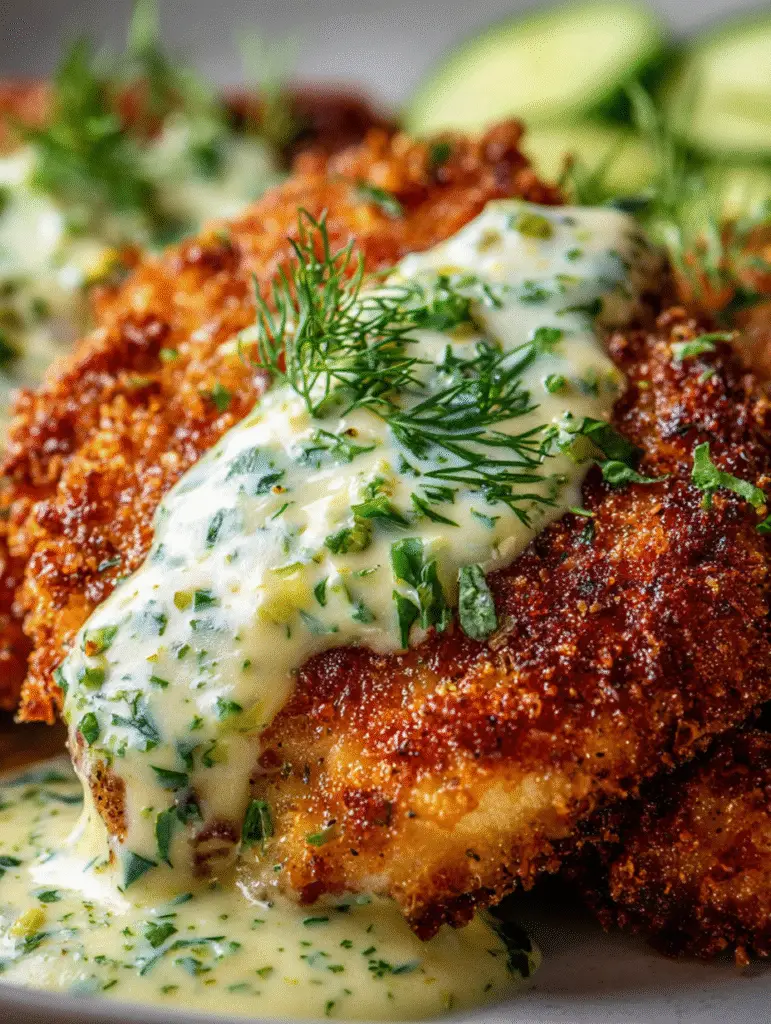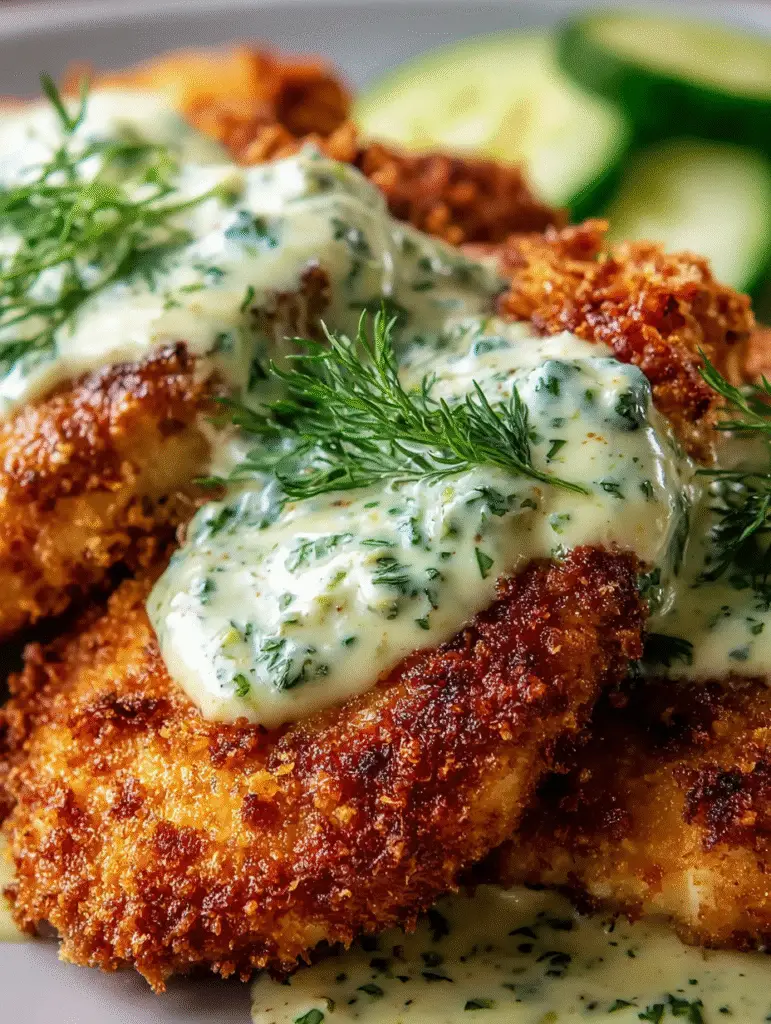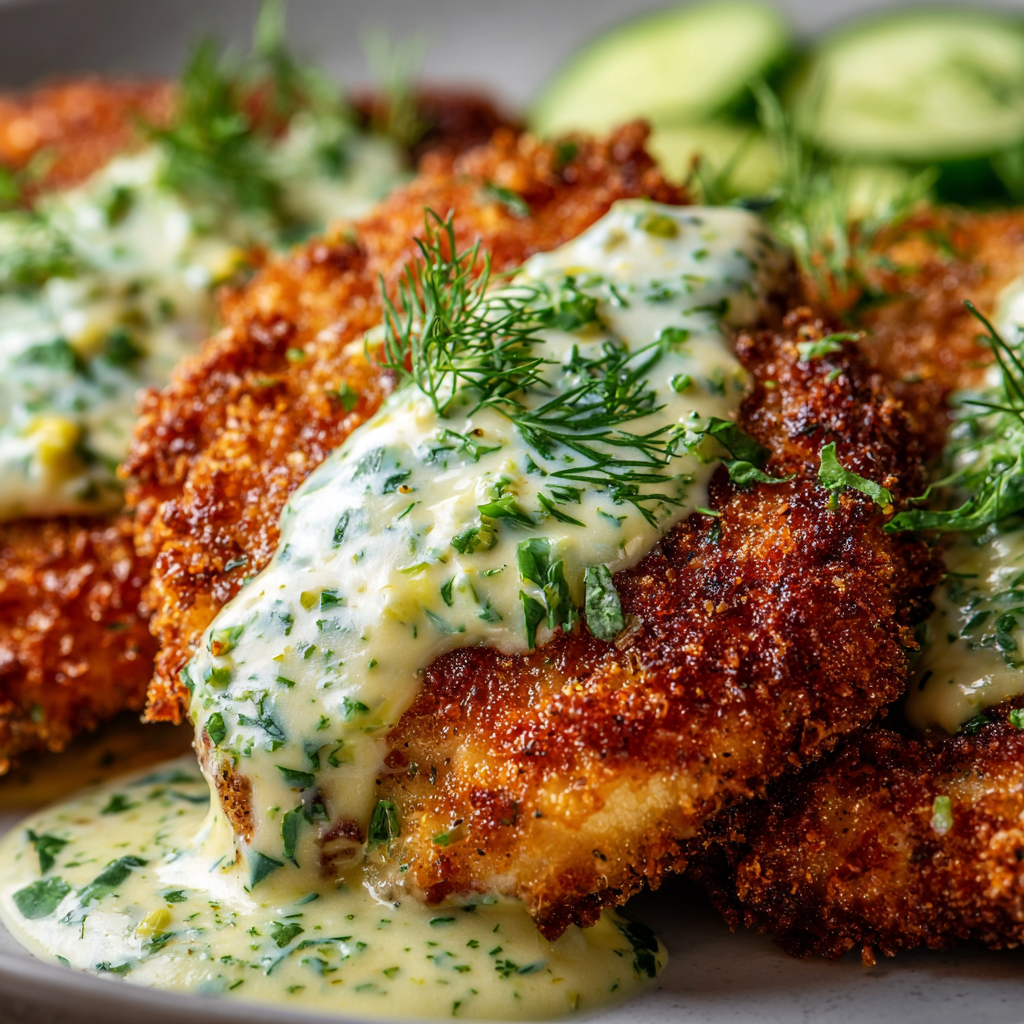There’s something magical about the combination of tangy pickles and savory Parmesan cheese. I first discovered this incredible pairing at a local diner, where the chef casually mentioned marinating chicken in pickle juice. Skeptical at first, I took one bite and was instantly hooked. The pickle juice acts as a natural tenderizer while infusing the chicken with a subtle tang that perfectly complements the crispy, cheesy coating. Since that day, this recipe has become my go-to whenever I want to impress dinner guests or simply treat my family to something extraordinary.
Why You’ll Love This Recipe
This Crispy Dill Pickle Parmesan Chicken delivers restaurant-quality results right in your own kitchen. The pickle juice marinade works wonders, transforming ordinary chicken breasts into incredibly tender, flavorful pieces that stay juicy even after frying. Additionally, the double coating of Parmesan and breadcrumbs creates an irresistibly crunchy exterior that contrasts beautifully with the moist interior.
What makes this recipe truly special is its versatility. Whether you’re cooking for picky eaters or adventurous foodies, everyone seems to love it. Plus, most of the ingredients are pantry staples you probably already have on hand. The preparation is straightforward enough for weeknight dinners, yet impressive enough for special occasions.
Ingredients You’ll Need
Main Components
- 4 chicken breasts, boneless and skinless – Choose evenly-sized pieces for consistent cooking
- 1 cup dill pickle juice – The secret ingredient that tenderizes and flavors
- 1 cup breadcrumbs (preferably seasoned) – Panko works wonderfully for extra crunch
- ½ cup grated Parmesan cheese – Freshly grated melts better and tastes superior
- 2 large eggs – Acts as the binding agent for the coating
- ½ cup all-purpose flour – Creates the foundation layer for breading
- 1 teaspoon garlic powder – Adds aromatic depth
- 1 teaspoon onion powder – Enhances savory notes
- ½ teaspoon paprika – Provides subtle color and mild sweetness
- Salt and pepper to taste – Essential for seasoning
- Cooking oil (for frying) – Vegetable or canola oil works best
Optional Serving Suggestions
Consider pairing this chicken with creamy coleslaw, garlic mashed potatoes, or a fresh garden salad. A side of ranch or honey mustard dressing makes an excellent dipping sauce that complements the tangy, cheesy flavors. For a Southern-inspired meal, serve it alongside mac and cheese or biscuits.
Step-by-Step Instructions
Creating Crispy Dill Pickle Parmesan Chicken is simpler than you might think. Just follow these easy steps for guaranteed success every time.
Marinating the Chicken
Begin by placing your chicken breasts in a large bowl or resealable plastic bag. Pour the dill pickle juice over them, ensuring each piece is completely submerged. This step is crucial—the acidic juice tenderizes the meat while infusing it with that distinctive pickle flavor. Refrigerate for at least 30 minutes, though overnight marination yields even better results. If you have thicker chicken breasts, consider pounding them to an even thickness before marinating for more uniform cooking.
Setting Up Your Breading Station
While the chicken marinates, prepare your three-bowl breading station. This assembly-line approach makes coating the chicken efficient and mess-free. In the first shallow bowl, combine flour with salt, pepper, and garlic powder. Whisk the eggs in the second bowl until well blended, adding a tablespoon of water if needed to thin them slightly. Finally, mix breadcrumbs and grated Parmesan cheese in the third bowl, ensuring even distribution. Add the onion powder and paprika to this mixture for maximum flavor.
Preparing to Fry
Heat your oil in a large, heavy-bottomed skillet over medium heat. You’ll need enough oil to reach about ¼ inch up the sides of the pan. To test if it’s ready, drop a pinch of breadcrumbs into the oil—they should sizzle immediately without burning. Proper oil temperature is essential for achieving that perfect golden crust. If the oil is too hot, the coating will burn before the chicken cooks through. Conversely, oil that’s too cool will result in greasy, soggy chicken.
Coating Process
Remove each chicken breast from the marinade, allowing excess pickle juice to drip off. First, dredge the chicken in the seasoned flour, coating all sides and shaking off any excess. Next, dip it into the beaten eggs, letting any extra drip back into the bowl. Finally, press the chicken firmly into the breadcrumb-Parmesan mixture, ensuring complete coverage. Pat the coating gently to help it adhere. For an extra-thick crust, you can repeat the egg and breadcrumb steps one more time.
Frying to Perfection
Carefully place the breaded chicken into the hot oil, being cautious to avoid splashing. Fry for 5-7 minutes per side, resisting the urge to move the chicken too frequently—this allows the crust to form properly. You’ll know it’s ready to flip when the edges turn golden brown and the coating releases easily from the pan. Cook until the internal temperature reaches 165°F (75°C) and the coating is uniformly crispy. Use a meat thermometer to check doneness rather than cutting into the chicken, which releases precious juices.
Finishing Touches
Transfer the cooked chicken to a plate lined with paper towels, which absorbs excess oil while keeping the coating crispy. Allow the chicken to rest for 5-10 minutes before serving. During this time, the juices redistribute throughout the meat, ensuring maximum tenderness. Garnish with fresh dill or chopped pickles if desired. Serve immediately while hot for the best texture and flavor.

Serving Suggestions
This versatile dish pairs beautifully with numerous sides and accompaniments. For a classic comfort meal, serve it alongside creamy mashed potatoes and green beans. Alternatively, slice the chicken and place it on a brioche bun with lettuce, tomato, and extra pickles for an unforgettable sandwich.
Transform it into a salad by cutting the chicken into strips and arranging them over mixed greens with cucumber, cherry tomatoes, and a tangy vinaigrette. Kids especially love it when you cut the chicken into strips or nugget-sized pieces—perfect for dipping in their favorite sauces. For a lighter option, pair it with roasted vegetables or a quinoa salad.
Recipe Variations
Spicy Pickle Chicken
Add cayenne pepper or hot sauce to your breadcrumb mixture for a fiery kick. You can also use spicy pickle juice if you enjoy bold flavors. This variation pairs wonderfully with cooling ranch dressing.
Baked Version
For a healthier alternative, bake the breaded chicken at 425°F (220°C) for 20-25 minutes, flipping halfway through. Spray the coated chicken with cooking spray before baking to help it crisp up. While not quite as crunchy as fried, this method significantly reduces the oil content.
Air Fryer Method
Preheat your air fryer to 400°F (200°C) and cook the breaded chicken for 12-15 minutes, flipping once. This method delivers crispy results with minimal oil. Make sure not to overcrowd the basket for even cooking.
Gluten-Free Option
Substitute the regular breadcrumbs and flour with gluten-free alternatives. Crushed cornflakes or gluten-free panko work exceptionally well. The pickle juice marinade naturally remains gluten-free, making this an easy adaptation.
Make-Ahead Tips
This recipe offers several convenient make-ahead options for busy schedules. You can marinate the chicken in pickle juice for up to 24 hours in advance—the longer it sits, the more flavorful it becomes. However, avoid marinating for more than 48 hours, as the meat can become too soft.
Bread the chicken up to 4 hours ahead of time and store it on a baking sheet in the refrigerator until you’re ready to cook. This actually helps the coating adhere better. Just remember to bring it to room temperature for about 15 minutes before frying to ensure even cooking.
Leftover cooked chicken stores well in an airtight container in the refrigerator for up to 3 days. To reheat while maintaining crispiness, place it in a 375°F (190°C) oven for 10-15 minutes rather than using the microwave. You can also freeze the cooked chicken for up to 2 months, though the coating may lose some of its crunch upon reheating.
Notes
Pickle Juice Selection: Don’t discard that jar of pickle juice! Any type works, but dill pickle juice provides the most authentic flavor. Sweet pickle juice creates a different but equally delicious taste profile.
Oil Temperature: Maintaining consistent oil temperature is key to success. If you’re frying multiple batches, allow the oil to return to temperature between batches. An instant-read thermometer helps monitor this accurately.
Chicken Thickness: For best results, pound chicken breasts to an even ¾-inch thickness. This ensures they cook evenly and prevents dry, overcooked edges while waiting for thick centers to finish.
Cheese Quality: Freshly grated Parmesan makes a noticeable difference in both flavor and texture. Pre-grated cheese often contains anti-caking agents that can affect the coating’s crispiness.
Pan Size: Don’t overcrowd your skillet. Fry only 2 pieces at a time if needed, as too much chicken drops the oil temperature and results in soggy breading.

Frequently Asked Questions
Can I use chicken thighs instead of breasts?
Absolutely! Boneless, skinless chicken thighs work wonderfully in this recipe. They’re naturally more forgiving since their higher fat content keeps them moist. Adjust cooking time slightly, as thighs may cook a bit faster than breasts.
What if I don’t have pickle juice?
While pickle juice is the star ingredient, you can substitute with buttermilk or a mixture of vinegar and water (3 tablespoons vinegar to 1 cup water) with added salt. However, you’ll miss out on that distinctive pickle flavor that makes this recipe unique.
How do I keep the coating from falling off?
Make sure your chicken is relatively dry after marinating—pat it with paper towels. Press the breadcrumb mixture firmly onto the chicken and let it rest for 5 minutes before frying. This helps the coating set properly. Additionally, avoid moving the chicken too much while it cooks.
Can I make this recipe healthier?
Yes! Use the baked or air fryer method instead of pan-frying. You can also use whole wheat breadcrumbs and reduce the amount of Parmesan slightly. The pickle juice marinade keeps the chicken moist even with these modifications.
Why is my chicken dry even though I followed the recipe?
Overcooking is usually the culprit. Always use a meat thermometer and remove the chicken as soon as it reaches 165°F (75°C). Remember that the temperature will rise a few degrees during resting time. Another factor could be marinating time—ensure you’re giving the pickle juice enough time to work its tenderizing magic.

